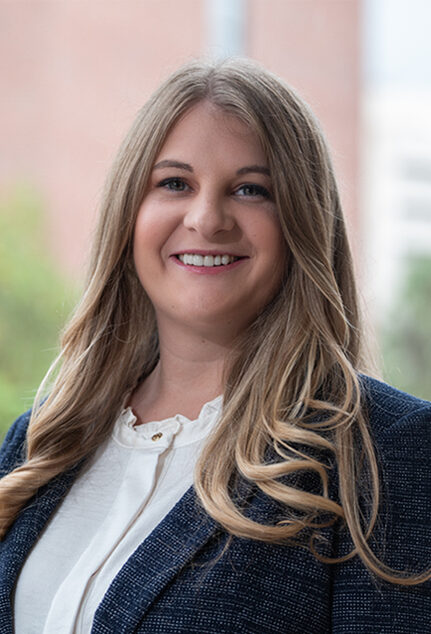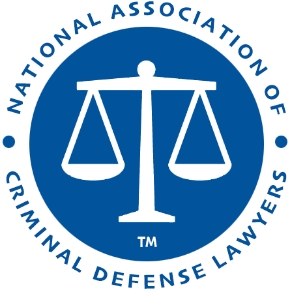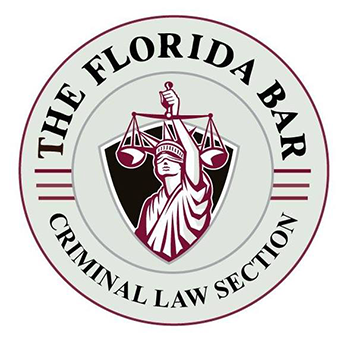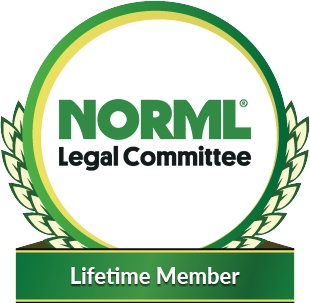Florida Youthful Offender Act
The Florida Youthful Offender (YO) Act was created to provide the trial court with adult sentencing alternatives for certain offenders under twenty-one (21) years of age who meet the eligibility criteria for sentencing as a youthful offender.
In 2019, the Florida Legislature changed the law so that a defendant could be sentenced as a youthful offender if the crime was committed before the offender turned 21. Before that change, the offender had to be sentenced before turning 21.
The purpose of the youthful offender act was to improve the chances of correction and successful reentry to the community. The court has several sentencing options for a youthful offender:
- incarceration for no more than 364 days in a county facility;
- department probation and restitution center;
- community residential center as a condition of community supervision;
- community supervision;
- incarceration; or
- a split sentence of incarceration and community supervision.
Under Section 958.04(1), F.S., the total period of incarceration, community supervision, or a split sentence cannot be longer than six years, or the maximum sentence for the offense if the maximum sentence is less than six years.
History of the Youthful Offender Act
The Florida Youthful Offender Act was adopted in 1978 to improve the possibility of rehabilitating and reintegrating young offenders into society by preventing their association with older, more experienced criminals in prison.
Another purpose of the Act was to provide a sentencing alternative for courts in dealing with an offender who could no longer be safely treated as a juvenile and who required more restriction than could be provided by community supervision.
Since the Act was originally passed, the Florida legislative intent expressed in s.958.021, F.S., has been expanded to include:
- providing youthful offenders with enhanced vocational, educational, counseling, and public service opportunities;
- encouraging citizen volunteers to help the youthful offenders successfully reintegrate into the community; and
- requiring youthful offenders to participate in substance abuse and other types of counseling and educational programs.
Benefits of a Youthful Offender Sentence in Florida
When the trial court sentences a youthful offender under the Florida Youthful Offender Act (Act), Sections 958.011-958.15, Florida Statutes, the statute provides an alternate sentencing scheme for use by judges when sentencing defendants between the ages of eighteen and twenty-one.
Youthful offender sentencing is discretionary, but if the trial judge elects to impose a youthful offender sentence, minimum mandatory terms otherwise associated with the offense of conviction do not apply, and the sentence is capped at six years or the maximum sentence for the crime(s), whichever is least. § 958.04(1)-(2), Fla. Stat.
Defendants sentenced under the Act are classified as “youthful offenders” and provided with multiple benefits, including placement in institutions separate from the adult prison population, special rehabilitation programs, and the possibility of early release upon recommendation by the Department of Corrections. §§ 958.03(5), 958.04(2)(d), Fla. Stat.
The six-year cap does not apply to a youthful offender sentence imposed as a result of a substantive violation of probation. Christian v. State, 84 So. 3d 437, 444(Fla. 5th DCA 2012).
The term “substantive” refer “exclusively to a violation premised on the commission of a separate criminal act” by a youthful offender. State v. Meeks, 789 So.2d 982, 989(Fla. 2001).
After a substantive violation, such as a new law offense, a previously designated youthful offender may be sentenced above the six-year cap up to the statutory maximum for the underlying offenses. Smith v. State, 109 So.3d 1180, 1181 (Fla. 1st DCA 2013).
Otherwise, after a judge in the circuit court imposes a youthful offender sentence, it must continue that status upon resentencing after a violation of probation or community control.” Lee v. State, 67 So.3d 1199, 1202 (Fla. 2d DCA 2011)(citing State v. Arnette, 604 So.2d 482, 484 (Fla. 1992).
Withhold of Adjudication in DUI Cases for Youthful Offenders
In Sloan v. State, 884 So.2d 378 (Fla. 2d DCA 2004), the court held that the mandatory adjudication provision for one found guilty of DUI under § 316.656(1), Fla. Stat., is inapplicable where a defendant is sentenced as a youthful offender.
Additionally, in State v. Gibron, 478 So.2d 475 (Fla. 2d DCA 1985), the court recognized that the Youthful Offender Act permits the trial court to withhold adjudication for the offense of vehicular manslaughter, even though section 316.656(1) prohibits the trial court from withholding adjudication of guilt for such offense.
Youthful Offender Disposition Not Available for Life Offenses
A youthful offender disposition is not available for capital or life offenses. Florida Statute § 958.04(1)(c) provides:
“… a person who has been found guilty of a capital or life felony may not be sentenced as a youthful offender under this act.”
For sentencing purposes, robbery with a weapon is classified as a first-degree felony, not a life felony, and therefore such an offense is eligible for youthful offender treatment. Simpkins v. State, 784 So.2d 1203 (Fla. 2d DCA 2001).
Statutory Language in Florida Statute Section 958.04
Section 958.04, Florida Statutes (2019), for judicial disposition of youthful offenders provides:
(1) The court may sentence as a youthful offender any person:
(a) Who is at least 18 years of age or who has been transferred for prosecution to the criminal division of the circuit court pursuant to chapter 985;
(b) Who is found guilty of or who has tendered, and the court has accepted, a plea of nolo contendere or guilty to a crime that is, under the laws of this state, a felony if such crime was committed before the defendant turned 21 years of age; and
(c) Who has not previously been classified as a youthful offender under this act; however, a person who has been found guilty of a capital or life felony may not be sentenced as a youthful offender under this act.
(2) In lieu of other criminal penalties authorized by law and notwithstanding any imposition of consecutive sentences, the court shall dispose of the criminal case as follows:
(a) The court may place a youthful offender under supervision on probation or in a community control program, with or without an adjudication of guilt, under such conditions as the court may lawfully impose for a period of not more than 6 years. Such period of supervision may not exceed the maximum sentence for the offense for which the youthful offender was found guilty.
(b) The court may impose a period of incarceration as a condition of probation or community control, which period of incarceration shall be served in a county facility, a department probation and restitution center, or a community residential facility that is owned and operated by any public or private entity providing such services. A youthful offender may not be required to serve a period of incarceration in a community correctional center as defined in s. 944.026. Admission to a department facility or center shall be contingent upon the availability of bed space and shall take into account the purpose and function of such facility or center. Placement in such a facility or center may not exceed 364 days.
(c) The court may impose a split sentence whereby the youthful offender is to be placed on probation or community control upon completion of any specified period of incarceration; however, if the incarceration period is to be served in a department facility other than a probation and restitution center or community residential facility, such period shall be for not less than 1 year or more than 4 years. The period of probation or community control shall commence immediately upon the release of the youthful offender from incarceration. The period of incarceration imposed or served and the period of probation or community control, when added together, may not exceed 6 years.
(d) The court may commit the youthful offender to the custody of the department for a period of not more than 6 years, provided that any such commitment may not exceed the maximum sentence for the offense for which the youthful offender has been convicted. Successful participation in the youthful offender program by an offender who is sentenced as a youthful offender by the court pursuant to this section, or is classified as such by the department, may result in a recommendation to the court, by the department, for a modification or early termination of probation, community control, or the sentence at any time prior to the scheduled expiration of such term. The department shall adopt rules defining criteria for successful participation in the youthful offender program which shall include program participation, academic and vocational training, and satisfactory adjustment. When a modification of the sentence results in the reduction of a term of incarceration, the court may impose a term of probation or community control which, when added to the term of incarceration, may not exceed the original sentence imposed.
(3) The provisions of this section shall not be used to impose a greater sentence than the permissible sentence range as established by the Criminal Punishment Code pursuant to chapter 921 unless reasons are explained in writing by the trial court judge which reasonably justify departure. A sentence imposed outside of the code is subject to appeal pursuant to s. 924.06 or s. 924.07.
(4) Due to severe prison overcrowding, the Legislature declares the construction of a basic training program facility is necessary to aid in alleviating an emergency situation.
(5) The department shall provide a special training program for staff selected for the basic training program.
Additional Resources
Youthful Offender Designation Report – Visit the website of the Florida Senate to find Interim Report 2011-114 issued in October of 2010 by the Committee on Criminal Justice entitled “YOUTHFUL OFFENDER DESIGNATION IN THE DEPARTMENT OF CORRECTIONS.” The report explains youthful offender admissions by calendar year based on whether the designation was court sentenced or DOC designated and a graph showing youthful offender admissions by circuit for each calendar year from 2000 through 2009. Find a graph showing the youthful offender locations and population as of June 30, 2009.
This article was last updated on Monday, October 24, 2022.














